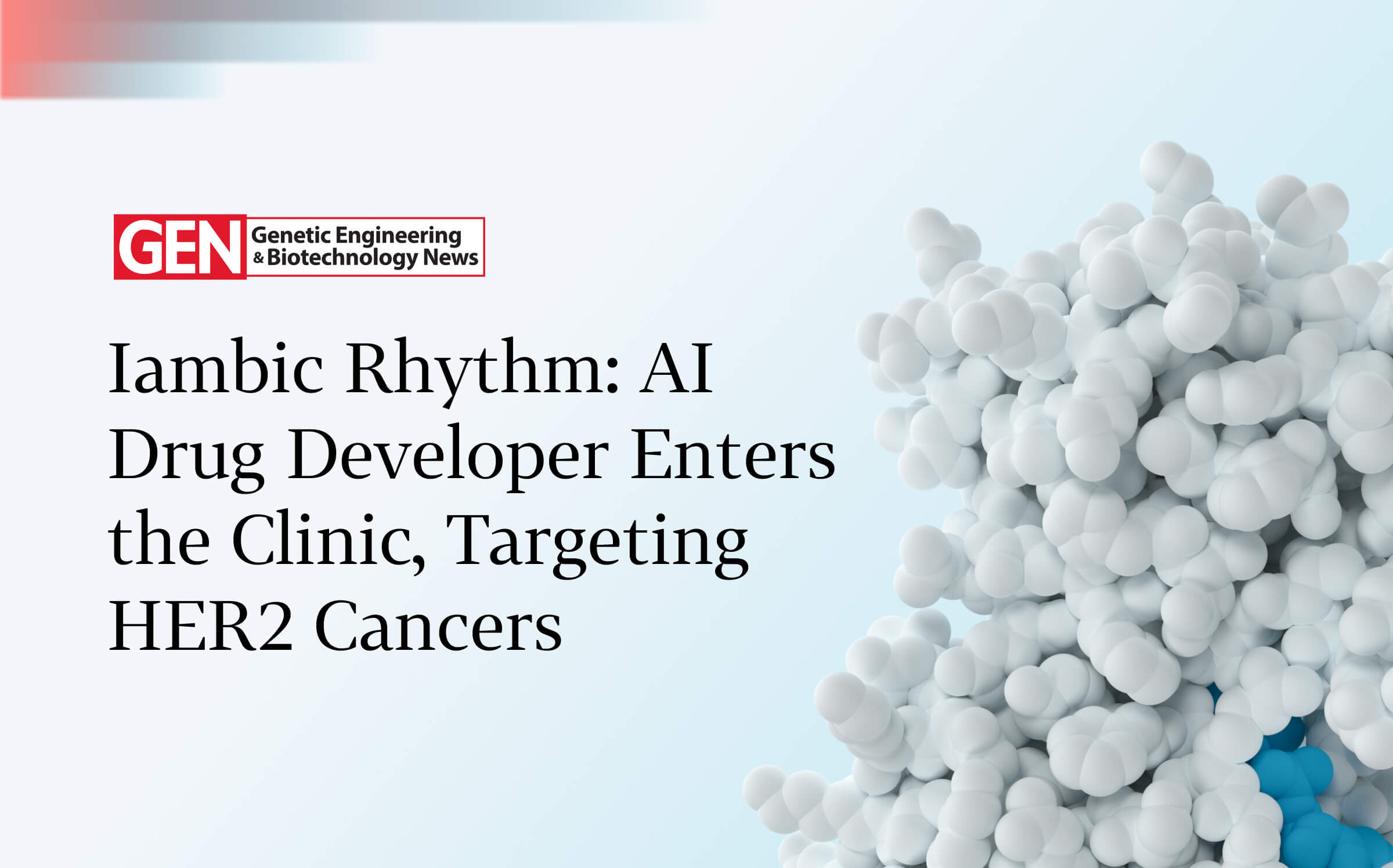Iambic’s Rapid Path to the Clinic Enabled by Its AI-Driven Drug Discovery Platform, Built in Collaboration with NVIDIA

A new drug candidate for the treatment of late-stage breast, lung and colon cancers, now in clinical studies, was first identified using Iambic's AI-driven drug discovery platform – a platform built, in part, through a collaboration with researchers and engineers at NVIDIA – demonstrating the potential of generative AI to rapidly develop new therapeutic candidates for patients.
IAM1363 is a selective and brain-penetrant inhibitor of HER2 signaling for the treatment of HER2-driven cancers. It is designed to reach metastatic tumors throughout the body, including the brain, and to have a greater therapeutic index than current therapies in the class while also avoiding toxicity.
Now in Phase 1, IAM1363 advanced from program launch to clinical studies in less than 24 months – a process which typically averages six years. The oncology program benefited from the use of state-of-the-art technologies, called NeuralPLexer and Orbnet, that can rapidly predict, in silico, the three-dimensional structure and full binding of protein-ligand complexes and the changes to their shape when they interact with drug molecules.
Iambic's approach unifies physics-informed machine learning and experimental automation to identify therapeutic candidates, radically speeding drug discovery and reducing costs by understanding protein structures in seconds rather than the months required by chemists in a lab. The technologies were built through a multi-year collaboration between Iambic and NVIDIA and played a role in the design of IAM1363 and many of the unique features that convey its potential benefit.
"The true measure of our work at Iambic is whether the treatments we develop have a meaningful impact on the lives of patients. The opportunity presented by our AI-driven drug discovery platform is its ability to accurately predict complex mechanisms of action and pharmacological patterns that we believe help us to rapidly design a pipeline of drug candidates that can be first-in-class or best-in-class," said Iambic's Chief Technology Officer Fred Manby, PhD. "Working with NVIDIA, we were able to develop and deploy the ground-breaking NeuralPLexer and OrbNet technologies to accelerate the discovery of important new therapies for patients. We are witnessing the impact of generative AI to transform drug discovery and deliver promising new drugs to human clinical trials."
A recent paper featured on the cover of Nature Machine Intelligence and written by researchers at Iambic, NVIDIA and Caltech, showed Iambic's NeuralPLexer to be the state of the art for the generative AI prediction of protein-ligand structures for drug discovery, with NeuralPLexer outperforming all other leading systems. Iambic subsequently released a white paper introducing NeuralPLexer2, which extends the model's capacity to predict the conformational changes in protein structures on the binding of drug molecules.
Iambic is leveraging NVIDIA microservices and NVIDIA BioNeMo and will deploy its NeuralPLexer model as a BioNeMo NIM, a microservice specifically for optimized inference. Iambic currently uses NVIDIA A100 and A10 Tensor Core GPUs for model training, fine-tuning and inference, as well as the NVIDIA BioNeMo cloud service to accelerate drug discovery. It is also investing in access to additional NVIDIA hardware to support its technology roadmap in the coming years.
"Generative AI has the power to transform drug discovery," said Kimberly Powell, NVIDIA Vice President of Healthcare. "Iambic has integrated BioNeMo and other emerging NVIDIA technologies into its platform to accelerate the creation of an oncology candidate that is already being studied in the clinic."
The Iambic Therapeutics AI-driven platform was created to address the most challenging design problems in drug discovery, incorporating the most current AI technologies and purpose-built tools from Iambic. The integration of physics principles into the platform's AI architectures improves data efficiency and allows molecular models to venture widely across the space of possible chemical structures. The platform's algorithms enable identification of new chemical mechanisms for engaging difficult-to-address biological targets, discovery of defined product profiles that optimize therapeutic window, and exploration of the chemical space to discover candidates for development with highly differentiated properties. Through close integration of AI-generated molecular designs with automated experimental execution, Iambic completes design-make-test cycles on a weekly cadence.
About IAM1363
IAM1363 is a selective and brain-penetrant small molecule, designed to inhibit wild-type and oncogenic mutant HER2 proteins, expand the therapeutic index compared to available HER2 inhibitors to avoid toxicities from off-target inhibition of a related receptor called EGFR. In preclinical studies, IAM1363 has demonstrated over 1000-fold selectivity for HER2 compared to EGFR, a promising pharmacokinetic and safety profile, preferential tumor enrichment, and penetrance of the central nervous system. In HER2 tumor models, including intracranial tumor models, IAM1363 has demonstrated favorable efficacy and tolerability compared to benchmark tyrosine kinase inhibitors and HER2-targeted antibody-drug conjugates. Details on the Phase 1/1b trial can be found here.



